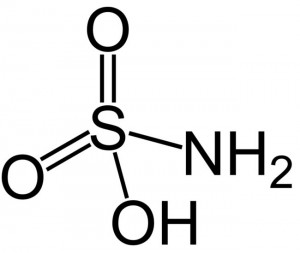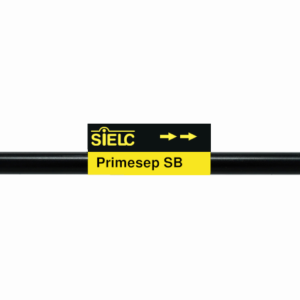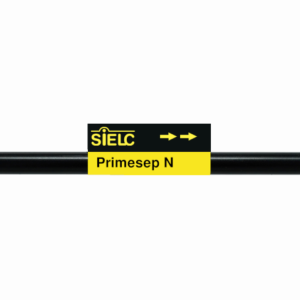| CAS Number | 5329-14-6 |
|---|---|
| Molecular Formula | H3NO3S |
| Molecular Weight | 97.090 |
| InChI Key | IIACRCGMVDHOTQ-UHFFFAOYSA-N |
| LogP | -4.34 |
| Synonyms |
|
Applications:
HPLC Retention of Sulfamic Acid on Primesep SB Mixed-Mode Column
July 16, 2009
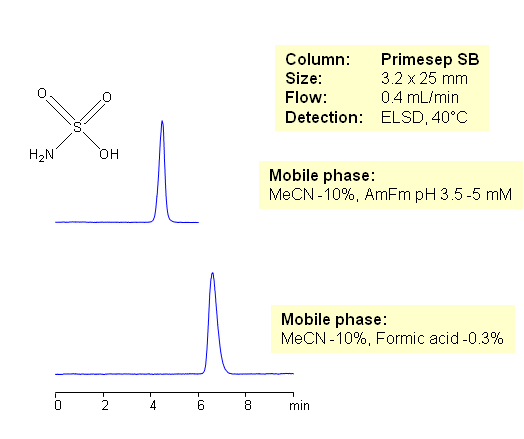
Sulfamic acid is inorganic acid which is used in various synthesis and compositions. It is used as precursor in synthesis of artificial sweeteners. Sulfamic acid (amidosulfonic acid, amidosulfuric acid, aminosulfonic acid, and sulfamidic acid) is very hydrophilic in nature and does not retain on reversed-phase columns. Acidic nature of this acid allows to retain this compound by mixed-mode mechanism. In current method sulfamic acid is retained by anion-exchange mechanism on Primesep SB mixed-mode anion-exchange column. Method employes acetonitrile and ammonium formate or formic acid. Sulfamic acid has no UV activity and needs to be detected by LC/MS, ELSD or Corona CAD. Retention time of sulfamic acid can be adjusted by the amount of buffer/acid in the mobile phase. This method can be used for analysis of organic and inorganic acids in different sample matrices.
Application Column
Primesep SB
The Primesep family of mixed-mode columns offers a wide variety of stationary phases, boasting unprecedented selectivity in the separation of a broad array of chemical compounds across multiple applications. Corresponding Primesep guard columns, available with all stationary phases, do not require holders. SIELC provides a method development service available to all customers. Inquire about our specially-tailored custom LC-phases for specific separations.
Select optionsAminosulfonic Acid
Sulfamic Acid

HPLC Separation of Sulfamic and Sulfuric Acid on Primesep N HILIC Column
July 16, 2009
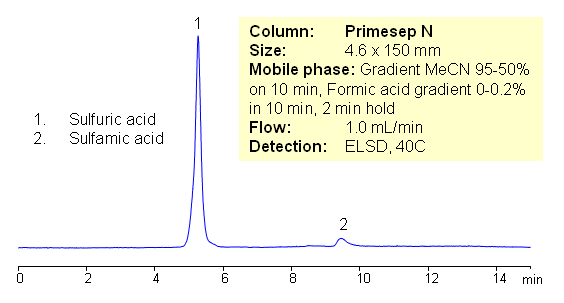
Sulfuric acid (sulfate ions) and sulfamic acid are analyzed in HILIC mode on Primesep N column. Both compounds are hydrophilic in nature and lack UV activity. Compounds are retained by hydrophilic interaction mechanism. Sulfate ion and sulfamic acid are monitored by ELSD. Method can be used for analysis of other inorganic ions.
Application Column
Primesep N
The Primesep family of mixed-mode columns offers a wide variety of stationary phases, boasting unprecedented selectivity in the separation of a broad array of chemical compounds across multiple applications. Corresponding Primesep guard columns, available with all stationary phases, do not require holders. SIELC provides a method development service available to all customers. Inquire about our specially-tailored custom LC-phases for specific separations.
Select optionsAminosulfonic Acid
Sulfamic Acid
Sulfate

